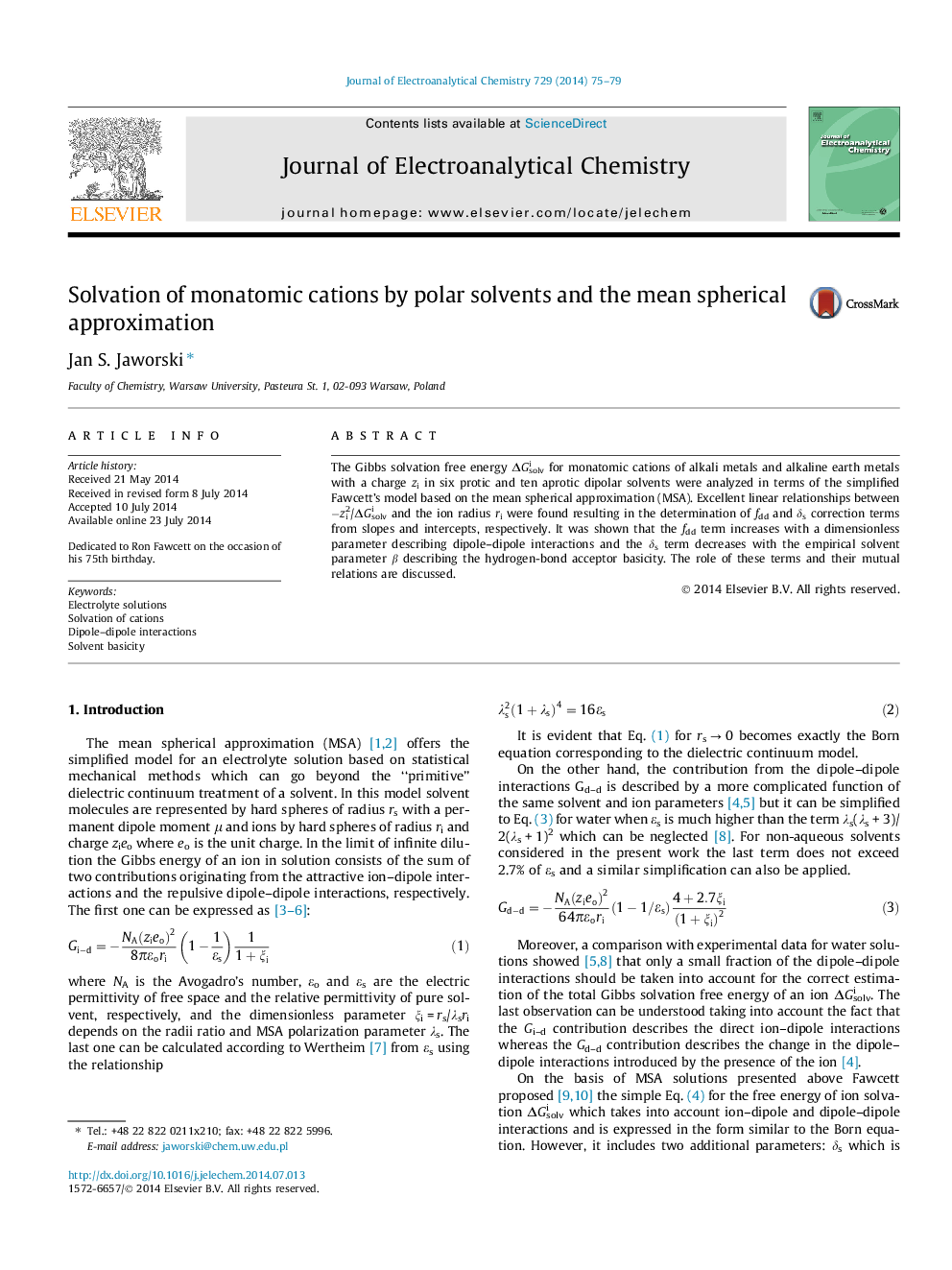| Article ID | Journal | Published Year | Pages | File Type |
|---|---|---|---|---|
| 218704 | Journal of Electroanalytical Chemistry | 2014 | 5 Pages |
•The Gibbs solvation energy for cations of 1st and 2nd groups is analyzed.•Excellent linear correlations with ionic radius gave two correction terms.•They depend on dipole–dipole interactions and solvent basicity, respectively.•Dipole–dipole interactions influence both correction terms.
The Gibbs solvation free energy ΔGisolv for monatomic cations of alkali metals and alkaline earth metals with a charge zi in six protic and ten aprotic dipolar solvents were analyzed in terms of the simplified Fawcett’s model based on the mean spherical approximation (MSA). Excellent linear relationships between −zi2/ΔGisolv and the ion radius ri were found resulting in the determination of fdd and δs correction terms from slopes and intercepts, respectively. It was shown that the fdd term increases with a dimensionless parameter describing dipole–dipole interactions and the δs term decreases with the empirical solvent parameter β describing the hydrogen-bond acceptor basicity. The role of these terms and their mutual relations are discussed.
Graphical abstractFigure optionsDownload full-size imageDownload as PowerPoint slide
